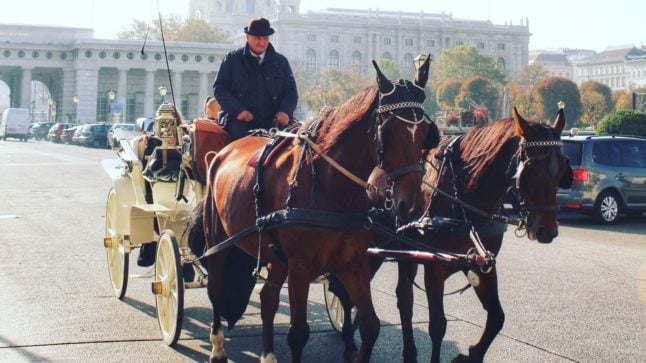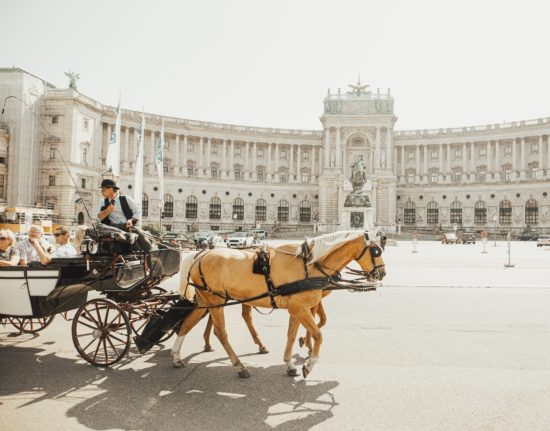The image of two horses carrying a carriage full of tourists mesmerised by beautiful Austrian sights is quite a common one, particularly in Vienna.
The Fiaker, which is the Austrian name (borrowed from French) for the set of two horses, plus a carriage and coachman, are quite popular and represent an important part of Viennese history.
The first license for a Fiaker was granted in the capital around 1700. They rose in popularity before the advent of cars in the 1900s.
“They are just as much a part of Vienna as St. Stephen’s Cathedral and the Giant Ferris Wheel: the fiakers”, according to the Vienna Tourist Board.
READ ALSO: One day in Vienna: How to spend 24 hours in the Austrian capital
Now, though, the symbol for the capital has become the target of controversy. For years, animal rights groups have protested against the overworking of the animals, the stressful conditions for the horses on busy Viennese roads and the extreme heat they face in summer.
What are the main issues raised?
For years now, several animal rights groups have protested against exploiting the animals for touristic purposes.
By Vienna regulations, the horses need to be out of the streets once temperatures reach 35C. Many groups ask for the limit to be at least 30C instead.
Additionally, the temperature base is measured at the stables, in the mostly shaded areas from where the animals leave every morning to work in Vienna’s first district, where the blazing sun and scorching pavements could make temperatures higher by several degrees.
READ ALSO: Why Vienna is a haven for wild animals – and where you can find them
Another issue raised by groups is that the fiaker no longer fits in a busy 21st-century capital – with its busy roads and loud cars. They claim that walking among the many vehicles and tourists of the first district is unnecessarily stressful for the horses.

What do the fiaker associations say?
Many representatives of the organisations reiterate that the animals are well-cared for and used to the heat.
A spokeswoman for the carriage companies asks for a round table with politicians as debates heat up, ORF reported. The veterinarian Isabella Copar, who works for two Fiaker farms, says there is no basis for the 30C regulation.
“I don’t understand that politicians make a judgment on animal welfare, even though they have no idea about the animals”, she told the broadcaster.
READ ALSO: How to explore the Austrian mountains in the summer like a local
Copar mentions a 2008 study by the Veterinary school of the University of Vienna saying that after nearly 400 measurements on the animals, not a single case of “heat stress” was found.
As for the infamous cases when horses have collapsed in the streets of Vienna during particularly hot days, she states that the collapses are usually due to a horse disease.
It was never possible to establish a connection with the heat. “If this happens in the stable, no one is interested,” the veterinarian said.
What is next?
The latest news in the controversy is a major one. The Health Minister, who is also Animal Protection Minister Johannes Rauch (Greens), has stated he would “welcome” a debate about a Fiaker ban.
“You should think about it, really for animal welfare reasons, whether you should expose a horse to this stress.
According to the minister, there is a question also as to whether the use of the carriages fits in the context of a large city at all. “I think that’s a bit outdated”, he said.
READ ALSO: Austria bans ‘senseless’ killing of chicks with new animal welfare rules
There is a particular tug of war between the City and the Federal Government regarding whose responsibility it is to act on a possible ban or even tighten the rules.
Both authorities are set to talk about the issue in June. They are set to also speak with the Fiaker associations.
Vienna is unlikely to see a total ban as early as that. Still, a 30C temperature limit after which the horses would need to be sent back to stables could be heading to the capital.



 Please whitelist us to continue reading.
Please whitelist us to continue reading.
Ridiculous! Those people have no idea what they are talking about. I love and care for horses. The relation between a horse and his human owner is special and horses are taken care of well in Vienna. What else, ban horses from countries that have moderate or hot weather!